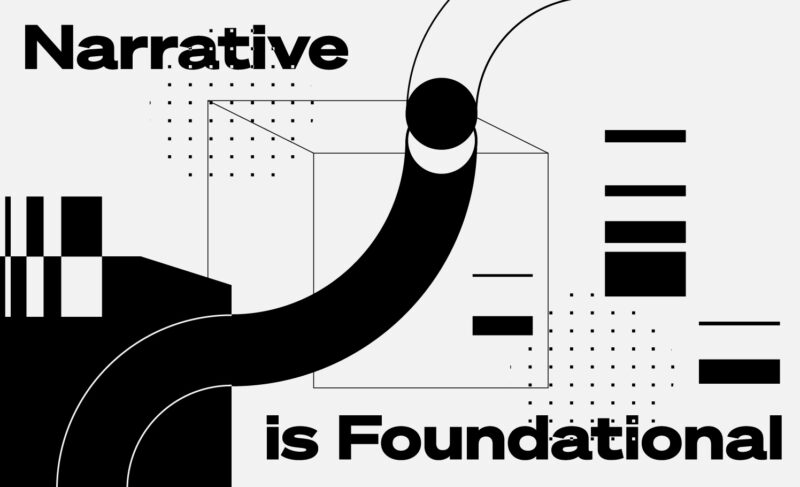Telling Stories That Drive Conversions
Related Services
Credits
Writer: Daniel Kremsa

If you remove everything else, you will realize that the foundation of any marketing campaign is actually just an attention-grabbing story.
At its very core, marketing is all about telling a story. Of course, effective marketing requires you to tell inspiring, believable, engaging stories – and that’s where things tend to get tricky. In short, the good news is that everyone loves a good story. And the bad news? Coming up with seamless and engaging narratives – and telling stories that inspire action – is hard work. How can you captivate your target audience and make storytelling your secret weapon, though? That’s something we’d like to explore today. So, if you wish to know more about storytelling for conversions, be sure to stick around.
What Is Storytelling?
Storytelling is – well, telling a story. Conversion storytelling takes things to the next level, though, and moves towards higher quality, targeted content that compels your audiences to take action – no matter where they are in their journey. It uses the same elements that any “regular” story would – but it does so with the goal to get the brand’s message across, engage the audiences throughout their customer journeys, and, finally, convert them into actual customers.
As deceivingly simple as it may seem, there’s, indeed, an art to storytelling. Unfortunately, some marketers still don’t get it quite right – and we say “unfortunately” because: When told at the right time, at the right place, and in the right way, with a cohesive narrative that is tailored to your target audience, stories can help you build deeper emotional connections and fulfill your conversion goals. Yes, you still want to sell your products and services; that’s the ultimate goal. But storytelling is a way to go beyond just touting features or explicitly pushing your value propositions and draw the customers in with a persuasive, vivid story and a highly personalized narrative.
That brings us to something known as conversion storytelling. It refers to the strategy of creating and delivering compelling “micro-stories” with a narrative flow, where copy, images, and page structure all work together to create a natural progression from one section to the next. In essence, it’s about guiding the customer towards converting. And in a world where “advertising” is synonymous with “annoying,” a well-crafted, cohesive story might just be the secret ingredient needed for stronger brand loyalty and higher conversions.
Why Stories Work
You might assume that people make decisions based on logic and data – and we wouldn’t blame you if you did. It seems reasonable, right? And yet, research shows otherwise: We make choices – albeit subconsciously – based on our emotions; logic and rationalization only support these decisions. That is because the amygdala – the part of the brain that is in charge of emotions, emotional behaviors, and motivation – is also involved in decision-making. So, in essence, emotional reactions guide subconscious decisions. That brings us to the effectiveness of stories – and the innate effects stories have on the human brain. We’re social creatures that rely on stories as an effective way to transmit information and values from one individual to the next.
What does any of that have to do with marketing, though? Well, it seems that attention is in short supply these days. And stories – good ones, at least – can be your ticket to cutting through the monotony of today’s marketing because:
- Stories are more memorable – up to 22 times more memorable, to be exact – than plain facts and figures. Why? They allow you to engage the target audience both intellectually and emotionally.
- Stories fire up your visual cortex, meaning they are pretty much instantly converted into a visual narrative – and visual narratives tend to leave a more lasting trace in the human brain.
- Stories can create a unique bond between the storyteller and the listeners. In essence, the neurons in the listener’s brain will start synchronizing with the storyteller’s and fire in the same patterns – a mirroring effect known as neural coupling.
- Stories encourage empathy and feelings of emotional engagement – something known as narrative transport – which may facilitate the release of oxytocin, the brain’s feel-good chemical. And that essentially allows you to create positive associations with your brand.
In short, the human brain loves stories. And when you sum up all these “benefits” and add a compelling narrative into the mix, you get a formula for marketing success. The simple reason why storytelling works is this:
A good story will make it seem as if your brand is there to do more than just sell the products or services. It will make your brand more relatable, evoke positive emotions, and build trust, which, in turn, may inspire your customers to take action. And when you get your customers to take action, that is when your business will start seeing an increase in conversion rates. Who knew the recipe for success was that simple, huh?
Using Storytelling For Conversions
When it comes to using storytelling for conversions, the goal is simple:
Influence your audiences and inspire them to take action. The three key things you must do when creating a good, persuasive story are to highlight the pain points, offer a solution through your products and services, and give them a happy ending. Of course, there is no perfect, fool-proof formula for increasing conversion rates. As much as we hate to admit it, there is no such thing as a “magical fix.” It’s often about trial and error – meaning you’ll have to see for yourself which elements work for you and which ones don’t.
With that said, a good narrative will take you a long way. So, how can your business leverage the power of storytelling and boost your bottom line?
Here are some actionable ways to improve your conversion rates with storytelling:
- Take the time to uncover your customers’ pain points. Knowing your target audience is a crucial part of marketing – which is evident in storytelling, too. Making the story relevant is impossible when you don’t know who you’re targeting. So, get to know them and then discuss topics that are applicable to them and highlight these pain points.
- Position your brand as the problem solver. Once you are aware of your target customers’ pain points, it’s much easier to create a narrative that positions you as the expert in your industry and demonstrates your authority. That’s your chance to educate your audiences and transition into presenting a solution to their problem.
- When telling a story, make it authentic and honest. The thing is, the consumers choose brands in pretty much the same ways they choose friends, meaning they value honesty and authenticity. And, of course, never promise something that you know your business can’t deliver.
- Choose the right medium. You’re not limited to storytelling through text. Visuals, primarily images and videos, can complement the story you’re telling through text to make it more engaging – and suitable for shorter attention spans. Do note that your choice of mediums also depends on your target audience and your message.
- Make your target customer the hero. Every story needs a hero, and that’s something you can use to your advantage. Shift the spotlight from your business onto the customer – and make them the hero of your story.
Pastilla’s campaign for Frederick K.C. Price III Christian Schools is a fantastic example of the true power of storytelling in marketing: With a combination of a digital marketing campaign and a promotional film, Price not only saw a massive 727% increase in site traffic but an increase in enrollment, as well.
If you want to see what storytelling can do for your brand – and, more specifically, conversion rates – don’t hesitate to get in touch!


